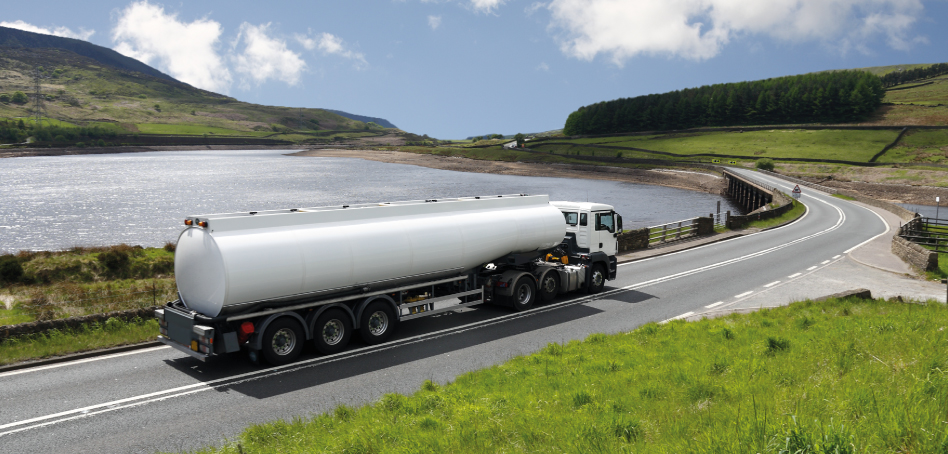Driving at work – Road Safety Week
Published On : 15 Nov 2022
Driving at work – Road Safety Week
1 in 3 of all road fatalities involves a vehicle being driven for work, which means driving for work is one of the most dangerous activities you can ask your employees to do1.
Managing work-related road risk is vital to protect your employees, your business and help improve road safety. An article by iAM Roadsmart in 2022 explains how unexpected downtime following a collision has an immediate impact on your productivity, and additional costs in the longer term. Delayed deliveries, vehicle repair and hire costs, insurance premium increases and employee absences mean that, as a business even a minor collision can result in unforeseen costs equivalent to a significant proportion of your revenue.
Furthermore, SME’s survive and thrive on reputation. Making sure that your drivers are considerate and law-abiding, is an important part of maintaining the image that you’ve worked hard to achieve.
As with all hazardous work activities, preparing staff with the right kind of training is key to ensuring their safety as they go about their jobs. Time pressure, distraction, fatigue, unfamiliar locations and the tendency to treat a work vehicle as a ‘mobile office’ are all factors that can heighten the risk of driving on business2.
So what can you do to help your drivers achieve safer journeys?
Having a comprehensive driver handbook or policy which outlines the responsibilities of both the employee and the employer is a good start.
According to Global Fleet Champions, the non-profit global campaign to prevent crashes and reduce pollution caused by vehicles used for work purposes, a well-integrated safe and sustainable journeys policy is essential for any organisation, and can help you achieve3:
• Fewer collisions and other road incidents
• Lower repair costs and insurance premiums
• Reduced vehicle downtime
• Improved corporate reputation
• Better staff morale and wellbeing
What should your handbook or policy cover?
It should include appropriate speeds, licence and health checking, the use of hand’s free mobile phones, but should also extend to the use of employees own personal vehicles, expectations or consequences around penalty points being incurred, being unfit through drink or drugs and the amount of time spent behind the wheel for both HGV and non-HGV drivers (HGV drivers being subject to the Working Time Directive).
Embrace technology
• Wherever possible choose vehicles fitted with the latest safety technologies
• Use telematics systems to monitor driver performance
• Act on any data you gather and use it to improve safety
• Ensure drivers understand the technologies that their vehicles are equipped with
Telematics can be used to identify poor driving, enabling employers to target tailored training, or show if employees are behind the wheel for too many hours, and could be beneficial in preventing incidents occurring. It also improves fuel economy in most cases when first implemented.
Ensure your vehicle checks are robust, and the output recorded – the increasing numbers of multi-agency compliance events on UK roads (bringing together the Police, HSE, DVSA, HM Revenue & Customs and Highways England) frequently produce 80-90% non-compliance rates (with an average of two offences per vehicle) which could cause problems with Operator Licences.
Assess all new drivers (including eye tests) and have a training process in place which is triggered after an RTC or if your telematics system flags performance issues, as well as scheduled periodic follow-up assessments.
Look after your Drivers
Driver mental health and wellbeing are important for the safety of your fleet. In June 2021, an article in Fleet News mentioned Venson report ‘It’s Good to Talk - Caring About Mental Health’, says employees suffering from stress were 50% more likely to drive dangerously and be involved in crashes. The pressure of an increasingly demanding work culture in the UK was one of the ‘biggest contributors to stress among the general population’4
As an employer, learn how to identify signs that drivers may be struggling with mental or physical health issues, and have appropriate measures in place to support them. It's essential to create the right culture, where drivers feel comfortable discussing their issues. Consider using a wellbeing app to let drivers ‘check in’ with how they’re feeling.
Driver Training
At OAMPS we don’t just want to be there when something goes wrong: we want to help businesses prevent it from going wrong in the first place.
That's why, in partnership with our parent company Pen Underwriting, we offer driver training. This includes specialist training and courses for drivers in the hazardous goods & general haulage industries, its customers, suppliers and contractors, to prevent and reduce the possibility of accidents.
Our driver training team has provided specialist training for over twenty years and has trained thousands of delegates and organises hundreds of training days each year both in the UK and abroad. All our services are delivered by in-house specialists supported by a network of associates who have expertise in their field and have practical in-depth experience of the industry.
Our services are all designed to meet current legislative requirements relating to the storage and distribution of hazardous and general goods and general haulage industries. Plus, our friendly and professional instructors are easy to work with.
Our broad selection of training courses includes:
- ADR Driver training
- CPC Driver Periodic Training
- Petroleum Driver Passport
- Hazard Awareness
- Spillage Prevention
- Ladder Training
- Fire Risk Assessment
- Fork Lift Truck
- LGV & Car Fuel Saving
To find out more about our driver training, please click here.
Want to know more?
We hope you find the article of interest. To find out more about how OAMPS Hazardous Industries can support and protect your business, get in touch with the team today.
1 Driving for better business (2022), Landmark study reveals driving for work death toll, https://www.drivingforbetterbusiness.com/articles/landmark-study-reveals-driving-for-work-death-toll/
2 iAM Roadsmart (2022), https://www.iamcommercial.co.uk/
3 Global Fleet Champions (2021), Achieving safe and sustainable journeys, https://globalfleetchampions.org/resources/factsheet-achieving-safe-and-sustainable-journeys/
4 Fleet News (2021), Venson calls for greater focus on driver wellbeing, https://www.fleetnews.co.uk/news/people-news/2021/06/04/venson-calls-for-greater-focus-on-driver-wellbeing




